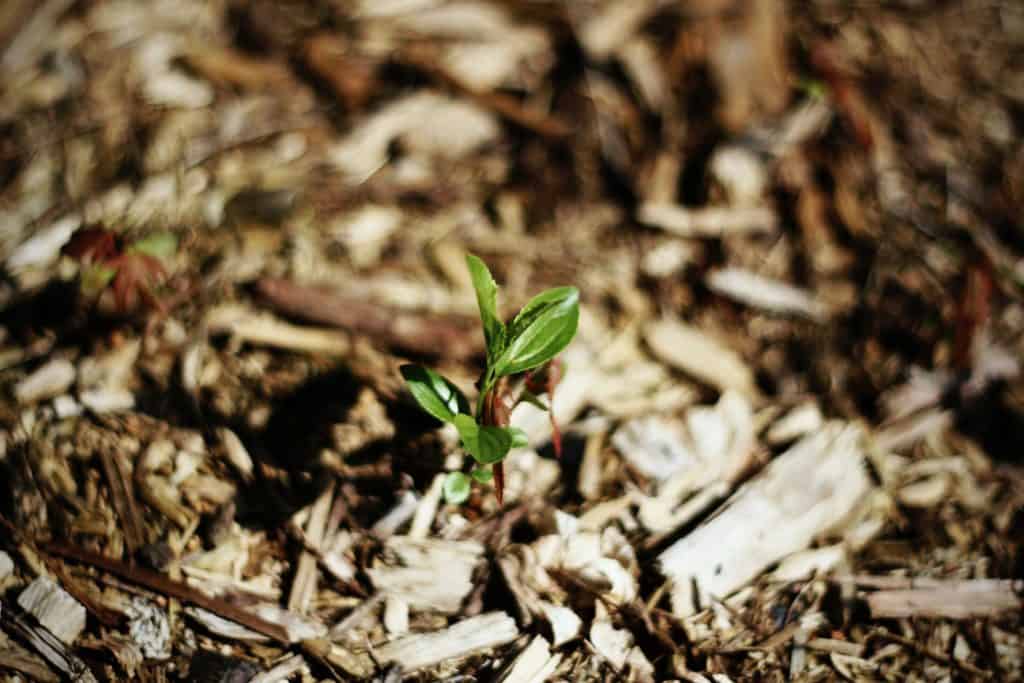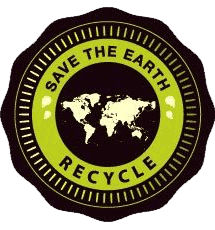Whether you’re regularly out in your yard or it’s just a space for the kids to play in, all yards generate trash. The Environmental Protection Agency found yard trimmings in municipal solid waste (MSW) made up 35.4 million tons in their last calculation. This accounts for 12.1% of all MSW generation and you may find there are many ways you can make better use of your yard waste and benefit from a greener space to enjoy outdoors, as well as positively impacting the environment. From this 35.4 million tons of yard trimmings, around 10.5 million tons ended up in landfill and in many cases this could have been completely avoided.

Much of the trash in your yard can be easily reused for the benefit of your lawn and plants. Actively finding ways to minimize unnecessary trash is important if we want to look after the planet correctly, and your yard is a great place to start if you’re looking to take positive steps.
The borough of Delmont, Pennsylvania is within our delivery range at Eagle Dumpster Rental in Westmoreland County.
Why is it Important to Recycle Yard Waste?
Your yard waste should be reused and recycled to ensure you are doing your best for the environment. When you collect your yard waste in a compost pile, bacteria which rely on oxygen (aerobic bacteria) work with other microorganisms within the waste to break it down into nutritious components which can improve the soil quality and provide additional nutrients to a wide variety of plants. Letting your yard waste be taken to landfill means that the same bacteria will break down the yard waste and product methane, a dangerous greenhouse gas. Methane is in the top three most prevalent greenhouse gases in the US and landfills are a huge contributor to the overall methane levels across the country. If all US citizens made the switch to recycling yard waste, we could considerably impact the volume of waste in landfill and cut the methane levels too.
Steps towards Better Yard Management
Your city or state will have individual rules around recycling, but all municipalities offer their systems some support with the waste disposal, beyond the landfill. All city and town websites should have dedicated trash and recycling pages so you can work out where your yard waste should go and separate it accordingly. There are other ways you can make better use of your trash in the yard, too:
1) Reduce Waste by Reusing It
Recycling is an effective option for dealing with yard trimmings and waste, but you could take a further step out of the carbon cycle and reuse and recycle your waste yourself. Keep your car fresh from soil and dirt, avoid trips to the recycling plant and save time, as well as the planet.
A highly effective way of reusing your yard waste is to simply leave it be. When you mow your lawn, consider the Grasscycling movement. Rather than collecting up all the cut grass, bagging it up and removing them, leave them on the lawn to decompose naturally. This allows for the nutrients in the cut grass to go back into the earth and fertilize your lawn. Remember you need to make sure you keep your lawn 1” or longer for this to work.
You can also make use of dried leaves and shredded or old wood waste in your yard by turning them into mulch. You can spread the mulch in thin layers around the base of your plants. It acts as a 100% natural deterrent for weeds. It can prevent weed growth, help with water retention and add nutrients back into the soil for the benefit of your plants and the wider ecosystem. If you don’t like the idea of grasscycling you can also do the same with your grass clippings.
2) Learn to Compost
Rather than using a community or public composting facility, it is quite straightforward to make your own at home. Compost is any organic material which can be added to your soil to help your plants grow and it can be made at home by combining many different household materials and waste which you may usually just throw in the trash.
A compost pile can include food scraps such as fruit and vegetables, coffee grounds, branches, twigs, dead leaves and grass clippings. You need to layer them properly for them to be effective and should incorporate equal amounts of browns to greens and the layers should alternate. Waste from your yard such as leaves, twigs and branches are classed as “browns” while grass, vegetable waste, fruits and coffee grounds are considered “greens”. Green layers provide the nitrogen, and the brown layers provide the carbon necessary to break down and create quality compost for your yard.

You can opt to store your compost in an unused trash can or purchase a specific compost bin, while others opt to have a compost pile at the end of their yard, allowing the nutrient-rich compost to build up.
3) Collect Water
Each American uses an average of 88 gallons of water a day at home. This is both expensive and, in many cases, could be reduced if we think more carefully about how we use water. Water used in the yard doesn’t need to come from the faucet and considering how much we use on watering plants and lawns, it’s worth finding another solution. Installing a water butt or simply collecting water in buckets or bins can provide all the water you need for your hose and to keep plants and grasses hydrated in the hotter months.
Whether you’re really proud of your yard or it’s just a scrap of land you let the kids enjoy, there is no need to let it become another source of trash for your home. Dumping the waste may seem like the easiest option but it’s no good for the environment and much of what you’re throwing in the trash could be nutritious for your yard too.
Small consecutive changes are vital in any attempt to combat climate change and by minimizing what you send to landfill, you’re playing your part.
